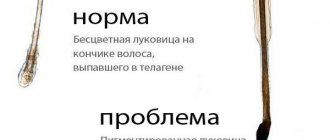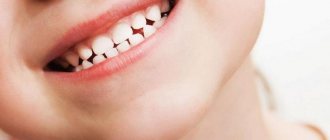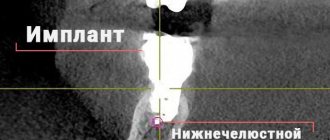One of the disadvantages of piercings that everyone has to put up with is pain during the piercing, as well as during the healing process. This stops many people with a low pain sensitivity threshold, while others are not only not afraid to endure, but even get a kind of pleasure, perceiving it as a kind of initiation rite. In addition, different areas on the human face and body have different degrees of innervation, which causes different intensity of pain during piercing. The method of puncture - manually or with a pistol, as well as the use of anesthetic and psychological attitude - also play a role in reducing or increasing sensitivity.
Helix piercing care
Means to treat the damaged area:
- Miramistin spray;
- Levomekol ointment;
- anti-pollution patches.
Laughter of care for the first month:
- 1-2 weeks. Rinse with spray, lubricate with ointment;
- 3-4 weeks. Rinse with spray.
For the first month, it is recommended to avoid visiting baths, saunas and hot tubs.
Where is the best place for a beginner to get their first puncture?
Minimal discomfort comes from piercing the eyebrows and lobe , which heal without any problems. It is a little more painful to pierce Helix and Conch, but they look more interesting. If you are very afraid and worried, you can always consult with a master and ask him all your questions. Perhaps the master will suggest you start with the simplest puncture so that you understand the healing process, and then move on to a more complex puncture.
Types of products
Immediately after piercing, a labret with a twist is inserted.
Types of cheats:
- rounded shape with opals or cubic zirconia;
- shaped titanium wraps;
- with different stones.
Clusters are often chosen for piercing. A cluster is a decoration where several parts are connected.
Hoop earrings can only be installed after 3 months.
Can be used:
- Circulars;
- Carnations;
- Bananas.
Painkillers for piercings
A frequent client request is to take pain relief before piercing in order to completely avoid pain during the piercing, but good salons will refuse you for several reasons:
External anesthesia does not have the desired effect and only affects the skin, without working on the cartilage; it will relieve you of pain only at the beginning of the puncture, so there will still be pain.
If you give a painkiller injection, it will most likely be more painful than the puncture itself (this is especially true for cartilage).
The master may advise you to take a pain reliever for several days after piercing, for example, Nimesil (in powder form), it relieves pain and swelling well after the procedure.
Possible infections and consequences
Causes:
- Decoration is removed too early;
- Swimming in open water;
- The puncture site is not treated;
- The ear is pierced incorrectly.
Consequences:
- Crushing of cartilage with possible death;
- Formation of scars that do not heal holes, followed by necrosis;
- Allergic reactions to decoration material.
Why does it hurt and how painful can it be?
Discomfort during the procedure depends on your pain threshold and the location of the puncture . Some salons offer anesthesia to reduce pain to zero, but we do not recommend doing it unless necessary , because the anesthesia injection is quite painful and is comparable to the puncture itself.
To make the puncture less painful, craftsmen use special laser-sharpened hollow needles. They allow the procedure to be carried out as painlessly as possible.
Professional piercers never use guns for piercing, because they push tissue under high pressure, which results in a lacerated wound. Also, pistols cannot be sterilized in a static machine due to the presence of plastic parts in it.
Blue hair and a nose ring: why teenagers experiment with their appearance
What's the first thing that comes to your mind when asked about teenagers? Of course, their “ruffiness” and audacity, which go hand in hand with their exotic appearance. I remember my best friend at school had bright orange bangs. Another classmate roamed the expanses of the blue-green school corridors with a bright pink bob. A classmate was running around in torn jeans, which almost all the teachers were trying to sew up. Well, I went with an extreme boy haircut - but with a completely restrained red color.
Piercings, tattoos, bright clothes, extreme hair colors - why is it all ? First of all , to stand out, show your individuality, be different from everyone else among other teenagers, and certainly seem creative and advanced against the backdrop of boring adults. And secondly, thirdly and fourthly...
Teenagers are far from infantile creatures - they are rather small adults and certainly understand more than their parents think
They see perfectly what the adult world is like: anxious, panicky, twitchy, hyper-responsible and super-busy. To bring optimism to this vision of the world, to protect themselves from a future in a strict gray suit and tie, young people dye their hair and mercilessly prick their navels, ears, noses, eyebrows and lips with needles.
The world in which little adults live is very often categorical
For some reason, society believes that the one who distinguishes black from white, clean from dirty, salty from sweet, and so on will be successful. In this world of rules there are no halftones, but life is much more voluminous and diverse than such boring attitudes. With their extraordinary appearance, teenagers are trying to show that in their world there is a place for other colors, that there are many shades - and all of them are beautiful. From here, according to cultural expert Olga Vainstein, problems with adults arise: parents, teachers, grandparents have already accepted the rules of the game, which is why they are so annoyed by teenagers who insist on their own, who do their best to deny these norms.
Exotic appearance is a kind of mask that helps teenagers cope with difficulties and adapt to the changes that occur in their thoughts and bodies.
Psychotherapist Patrice Ewer gave an interesting example about teenagers' clothing. As a rule, boys and girls who wear clothes that are too baggy do not want to focus on their gender differences, because body transformations occur at an alarming rate. You need to get used to all this, get used to it. And wearing genderless, universal clothing seems to create a calming cocoon in which there are no gender problems of the adult world (from the category of “a boy should be pumped up and strong”, and “a girl should have a thin waist”). But all teenagers are different. By the way, people live perfectly well without muscles and a waist - however, in adolescence, few people think about this.
Another great example is dreadlocks on girls. Psychoanalysts see in them a reluctance or unpreparedness for relationships with the opposite sex: dreadlocks resemble snakes on the head of the Gorgon Medusa. She herself is attractive, but snakes instead of hair repel men. “Dreaded” girls prefer to be friends with the opposite sex without any romantic flair. Olga Weinstein sees dreadlocks as a symbol of protest, since most people find this hairstyle dirty and ugly.
In the tattoos, the famous culturologist sees a clear message: “I hurt myself - look at my scars, it means I have reached a new level of development.” By the way, other experts interpret tattoos as a desire to prove to others and to yourself that you are a strong person.
In addition, exotic appearance is also a way to shape your personality
According to psychologists, a teenager needs to remain opaque, unreadable to parents and society for some time - he uses this pause to understand who he is, where he wants to go, what his purpose is. From this point of view, a red bang or a shaved temple is an excellent opportunity to temporarily put adults into a stupor, confuse them, and disorient them.
What should I do?
Adults have opposite reactions: some get angry and force them to wash off their emo makeup under running ice water, while others get inspired and go get an ultra-short haircut and dye their hair some creative color like strawberry pink. By the way, there are much more of the former (although perhaps not in such terrible manifestations).
Everything has its time. And adolescence is precisely the time to look for yourself, to try yourself in different guises. My adolescence was very calm - without a pierced lip, blue hair and ripped jeans. But all this (the desire to find myself, to stand out, to “move away”) came a little later: I was probably a strange 30-year-old aunt who came to the salon for a navel piercing (Eh! I wish I had gotten my eyebrow pierced!). Therefore, you need to treat such “swings” with understanding - as a stage in the life of your child.
Experts recommend that parents understand and forgive. And also to figure out what is going on in the young soul, that it is looking for unusual manifestations, to become more restrained, more tactful, more attentive. And, of course, love. This is probably the most important thing.
Does it hurt to get your nose pierced?
This is one of the popular types of piercings among both the male and female half of the population. There are different ways to pierce and wear jewelry:
- in the wing of the nose (standard method) - when the earring is inserted into a hole in the area of the so-called. helix, in the right or left nostril;
- nasal septum - the cartilage itself (septum), as well as the tissue located under the nasal septum under the tip of the nose (septril);
- tip of the nose – horizontal or vertical soft tissue piercing;
- bridge of the nose - perforation of a fold of skin in the area of the bridge of the nose (the tissues of the nose are actually not affected).
It is believed that the area of the so-called The nasolabial triangle is the most sensitive area on the face. Indeed, for many people, even a slight impact on the mucous membrane and skin of the nose and upper lip causes reflex lacrimation and intense pain. For other people, the piercing procedure is almost painless. It is impossible to say exactly what a particular person will feel: it all depends on the individual pain threshold, as well as the skill of the piercer.
If you read forums where users share their feelings after visiting a salon and having a piercing procedure, you can see that most people, when answering the question “how painful is it to pierce your nose,” answer negatively. Some say that it is no more painful than having your ears pierced; others even decided to pierce their nose with a gun or a needle themselves.
Piercing in the ear
Before piercing the ear cartilage, you need to decide on the type of piercing. The simplest and most applicable is a puncture of the lobe. Any such procedure is carried out under sterile conditions with a disposable needle and a specialist who understands his field. Helix piercing, the most common type of ear piercing, is also called a helix piercing. The deis method is complex in terms of technique. To wear straight jewelry, ask for industrial jewelry; here, two piercings are made at once. Puncture of the tragus (tragus) or antitragus (antitragus), tunnels, the process of stretching which takes more than one year.
How to reduce pain after the procedure?
When the jewelry has already been inserted, it is advisable to leave it alone for a while: do not touch it with your hands (especially with unwashed hands), carefully remove high-necked clothes, do not apply makeup, and do not get the jewelry wet. If you follow the recommendations for caring for the puncture for a month, it will heal during this time and the pain will go away. However, neglecting the rules of hygiene can lead to an infection getting into the wound, causing local inflammation with the release of pus. After this, a scar may remain, which will become re-infected with minor injuries and decreased immunity due to colds.
Contraindications
A hole in the ear for wearing an earring is a quick, inexpensive and virtually pain-free procedure, and most importantly, non-hazardous even for children. Jewelry in this way is now worn not only by the female half, but also by the male half, as our fashion dictates. But no matter how simple the procedure, there are a number of contraindications regarding the client’s health:
- Diabetes;
- Skin, blood diseases, diseases of the auricle, cartilage;
- Rheumatism;
- Neurological disorders;
- Keloid scar tissue;
- Head injuries;
- Weak immunity.
You can make an appointment by phone: +7(495)212-1534 . Our specialists are ready to answer all your questions at any time convenient for you.
Sign up for a consultation
Make an appointment
Non-dental infections after piercing
Like any injury, piercing reduces the body's defenses. At this time, dormant infections outside the oral cavity may become active and cause an acute process. If hygienic requirements, asepsis and antiseptics are not observed during piercing, there is a risk of contracting infections transmitted by “blood”, blood transfusion, when poorly treated instruments or hands, on which particles of infected blood of a sick visitor to the piercing salon remain, the infection enters the blood of a healthy one. This is how HIV, tetanus, and hepatitis are transmitted [1].
Piercing with a needle
Sometimes using a disposable needle is the only way to make a piercing in the desired location. Everything is done with a regular or hollow needle (empty inside), the second one is most often used at home, any of them must be disposable and sterile.
How to pierce the cartilage in the ear at home? It makes no difference where the procedure will be performed, the main thing is that it is carried out by a qualified specialist who understands the puncture technique and aesthetics. It is also important to know the exact location of acupuncture points. A cosmetologist and acupuncturist definitely have this knowledge, so it’s better not to tempt fate and turn to trusted individuals.
Historical reference
Piercing in English means puncture and has two basic meanings:
- piercing various parts of the body (nose, lips, cheeks, navel, etc.) for the purpose of subsequently inserting one or more jewelry;
- the decoration itself in the form of a ring, stud, etc.
This kind of product has been known and popular since ancient times in different parts of the world (India, the Mughal Empire, the Bedouins, the Aztecs, the Mayans, etc.).
In the 20th century, the popularity of piercing among Europeans and Americans increased. By decorating themselves in this way, representatives of punk culture and other newfangled movements of that time tried to highlight and indicate their belonging to one or another cultural movement.
The 21st century has made some adjustments to newfangled trends and the age limit of piercing owners (the vast majority are young people under the age of 14-25). Nevertheless, it also remains popular and in demand.










